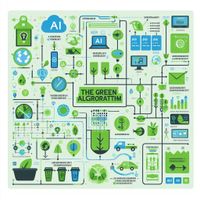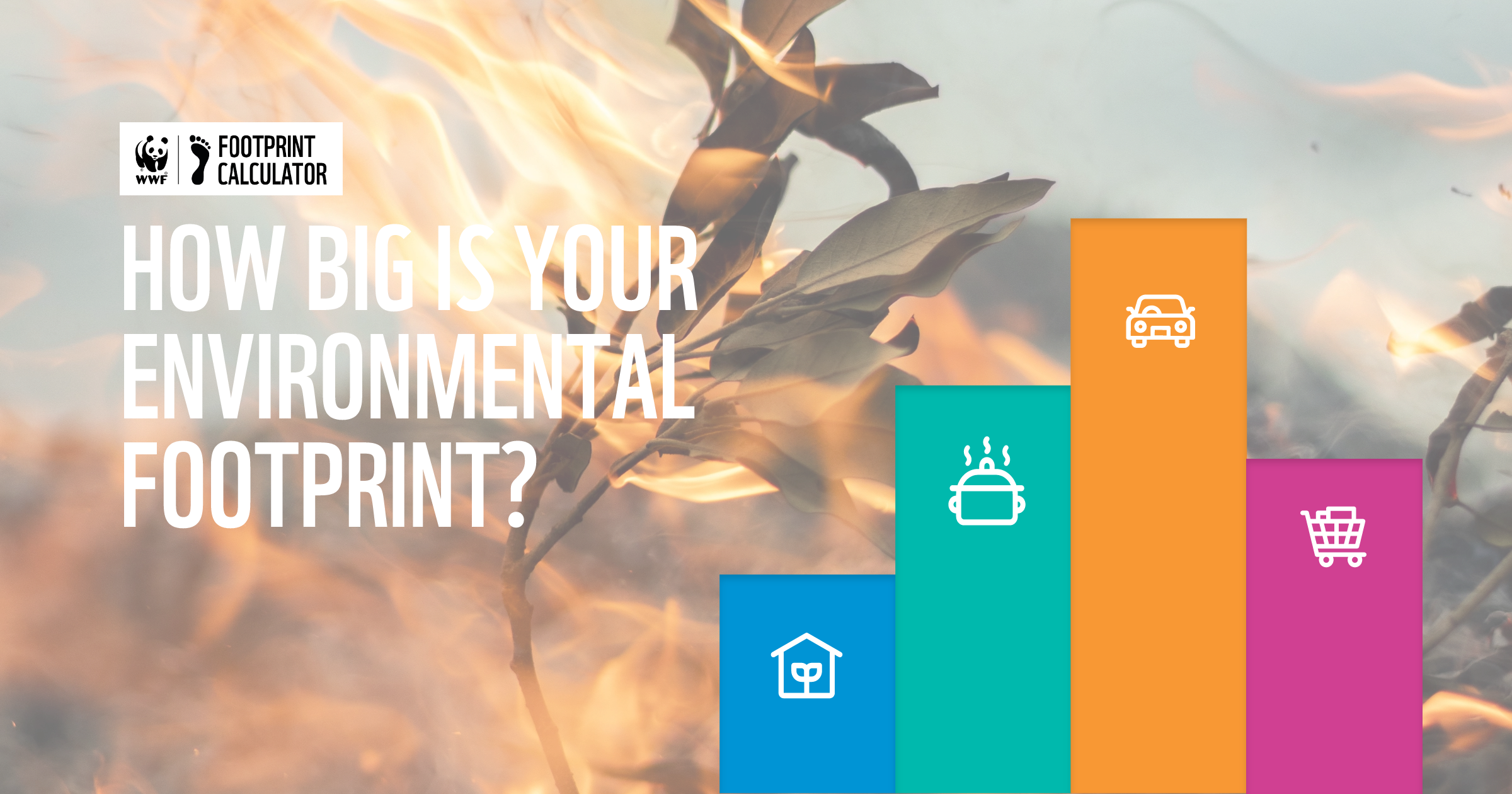Explore web search results related to this domain.

Notably, large language models like ChatGPT and Llama 2 exhibit substantial carbon footprints and energy consumption, prompting a critical examination of sustainability within their context. Policy recommendations underscore the importance of selecting eco-conscious cloud providers and strategic ...
Notably, large language models like ChatGPT and Llama 2 exhibit substantial carbon footprints and energy consumption, prompting a critical examination of sustainability within their context. Policy recommendations underscore the importance of selecting eco-conscious cloud providers and strategic data centre locations.In the realm of AI, assessing carbon emissions using CO2-equivalents (CO2eq) during model training while considering regional variations is pivotal for sustainability. The significant variability in…In the realm of AI, assessing carbon emissions using CO2-equivalents (CO2eq) during model training while considering regional variations is…Energy consumption, while dependent on hardware, is considered a direct measure of the environmental footprint. It is important to consider CO2eq as a direct measure of environmental impact, even if it’s challenging to measure directly, as it can be computed based on energy consumption and energy mix data. Figure 2. Carbon emission reduction options · In addition, sustainability metrics are crucial when assessing the environmental impact of large language models (LLMs) like ChatGPT and Llama 2.

The Sims 4: Eco Lifestyle expansion pack focuses on sustainable living, allowing Sims to build eco-friendly homes in any world, harvest their own food (which includes a new crop - soybeans), and reduce their neighborhood's environmental impact by voting on action plans. New Build & Buy items include different solar panels, wind turbines, and rainwater collectors to help Sims lower their eco-footprint ...
The Sims 4: Eco Lifestyle expansion pack focuses on sustainable living, allowing Sims to build eco-friendly homes in any world, harvest their own food (which includes a new crop - soybeans), and reduce their neighborhood's environmental impact by voting on action plans. New Build & Buy items include different solar panels, wind turbines, and rainwater collectors to help Sims lower their eco-footprint and the cost of their bills.Simmers looking to show off their love for gardening should consider adding these Eco Lifestyle objects to their Sims 4 world.With the two new traits introduced with the pack, Green Fiend and Recycle Disciple, Sims can enjoy a more sustainable way of living, which allows for unique, engaging gameplay, especially when it comes to gardening. There are also several Eco Lifestyle objects that can enhance a Simmer's gardening experience, but some are arguably better than others.The Sims 4: Eco Lifestyle focuses on sustainability, encouraging players to build eco-friendly homes, vote on action plans, and reduce a neighborhood's environmental impact.
Earthday.net, with its theme of ... and study the concept of ecological footprint. Together with Redefining Progress, it measures how much is needed to produce the resources we consume and dispose of our waste. EF: A measure of sustainability An interesting way to look at ...
Earthday.net, with its theme of 'Protecting our home', offers a number of resources to understand and study the concept of ecological footprint. Together with Redefining Progress, it measures how much is needed to produce the resources we consume and dispose of our waste. EF: A measure of sustainability An interesting way to look at ecological footprint is how much nations consume versus how much they actually have.The simplest way to define ecological footprint would be to call it the impact of human activities measured in terms of the area of biologically productive land and water required to produce the goods consumed and to assimilate the wastes generated.Another detailed look at the concept and a ranking of countries can be found here. What is your Ecological Footprint? Everyone of us has an ecological footprint. To find out how far you have put your foot in it, try this site, irrespective of your geographical location.Ecological Footprint of 52 countries Another way to measure ecological footprint is a country-wise ranking. Fifty-two nations are ranked here depending on how they fare in this department.

Lina A. Khaddour, ... Jacob K. Dodoo, in Encyclopedia of Sustainable Technologies (Second Edition), 2024 · The ecological footprint is one way of measuring sustainability on a city level. It was introduced in 1997 as the first systematic framework for calculating biocapacity and waste generated ...
Lina A. Khaddour, ... Jacob K. Dodoo, in Encyclopedia of Sustainable Technologies (Second Edition), 2024 · The ecological footprint is one way of measuring sustainability on a city level. It was introduced in 1997 as the first systematic framework for calculating biocapacity and waste generated in cities (Borucke et al., 2013).Policy makers have an important role to play to facilitate public acceptance towards naturalistic habitats in cities by reducing cities ecological footprints, promoting sustainable green economies, resource efficiency and reduce waste.Malin Song, ... Xianyou Pan, in Sustainable Marine Resource Utilization in China, 2020 · The modified marine ecological footprint model is used to measure the marine ecological footprint in coastal areas and the degree of coordination between marine economic growth and marine resource utilization in coastal areas is evaluated using the decoupling model.The Ecological Footprint (EF) is recognised as the first of the footprint tools (Wackernagel & Rees, 1996). It was developed in the 1990s as one of the first measures of sustainability and gained popularity due to the fact that the footprint concept was relatable, tangible, and meaningful.

Band used power-generating dancefloor, exercise bicycles, bamboo sets and solar panels
Massive Attack have teamed up with climate scientists to map their carbon footprint while on tour. Billie Eilish released her recent album on recycled and eco-vinyl and has stated that every tour venue of hers will host a ‘Billie Eilish Eco-Village’, where fans can learn about the climate crisis.Musicians have come under fire recently for the negative impact they leave on the environment, with popstar Taylor Swift’s private jet use being heavily scrutinised for its carbon footprint.Coldplay have successfully reduced their carbon emissions by 59 per cent during the first two years of their eco-friendly Music of the Spheres world tour.The band in 2021 announced their intention to make tours eco-friendly by reducing their carbon emissions by at least 50 per cent, and said they had a plan for how they would make it happen.
More specifically, the ecological footprint measures the amount of “biologically productive” land or water that enables the population to sustain itself. This measurement takes into account the resources a population needs to (1) produce goods and (2) “assimilate,” or clean up, its waste.
Sustainability for All. ... It is a measure of gauging human dependence on natural resources. ... Alane Lim is a materials science researcher at Northwestern University's Huang Lab. She holds a Ph.D. in materials science and engineering. ... Ecological footprint is a method of gauging humans’ dependence on natural resources by calculating how much of the environment is needed to sustain a particular lifestyle.The ecological footprint is one way of measuring sustainability, which refers to the ability of a population to support itself in the present without compromising that ability for the future. Environmental sustainability occurs when a population can support a particular lifestyle indefinitely while still meeting the demands placed on an environment.It calculates how much of the environment is needed to sustain a particular lifestyle. The ecological footprint can be calculated for different populations, including individuals, cities, regions, countries, or the entire planet.More specifically, the ecological footprint measures the amount of “biologically productive” land or water that enables the population to sustain itself. This measurement takes into account the resources a population needs to (1) produce goods and (2) “assimilate,” or clean up, its waste.
:max_bytes(150000):strip_icc()/renewable-energy-green-urban-farming-in-hong-kong-china-490580465-5c23d73a46e0fb00012d8b56.jpg)
The Ecological Footprint is a resource accounting tool that helps countries manage their ecological resources and secure their future. ... Communities and city planners around the globe use our tools to guide land use and budget decisions, track sustainability progress, and support better ...
Conceived in 1990 by Mathis Wackernagel and William Rees at the University of British Columbia, the Ecological Footprint launched the broader Footprint movement, including the carbon Footprint, and is now widely used by scientists, businesses, governments, individuals, and institutions working to monitor ecological resource use and advance sustainable development.A rich and accessible introduction to the theory and practice of the approach is available in the book Ecological Footprint: Managing Our Biocapacity Budget (2019). The European Commission provides a short summary here. Fuller methodological explanations and applications to national policy are provided in a Nature Sustainability paper (2021) and two MDPI papers, one on the national accounts method, and the other one on its implications.The Ecological Footprint is a resource accounting tool that helps countries manage their ecological resources and secure their future. ... Communities and city planners around the globe use our tools to guide land use and budget decisions, track sustainability progress, and support better sustainability policy and actions.The Ecological Footprint measures how fast we consume resources and generate waste compared to how fast nature can absorb our waste and generate resources.
As AI's presence and impact grows, so does its environmental footprint. Learn what companies like Salesforce are doing about it.
The stakes are high, and AI’s future may rest on how swiftly the industry can build sustainable solutions and ensure innovation doesn’t come at an irreversible cost to our ecosystem.One energy source that is seeing a resurgence in interest is nuclear power, since it is touted as a clean energy alternative that promises a smaller carbon footprint to offset AI’s high-energy needs. As Deóis Ua Cearnaigh, CTO at Aeon Blue, observes, “While nuclear’s day may not be today, it is the inevitable destination. In fifty years, we’ll likely be talking about nuclear as the backbone of sustainable energy.”As fans of history know, this isn’t the first time the economy has had to innovate its way out of the environmental consequences of economic growth that is too lucrative to pass up.The journey toward sustainable AI may be complex, but with businesses focused on balancing innovation with responsibility, the industry is well-positioned to create solutions that work for both business and planet alike.

Global Footprint Network. This international sustainability organization pioneered the Ecological Footprint.
August 1st marks Earth Overshoot Day, the date when humanity has used up nature's resource budget for the entire year, according to Global Footprint Network. This international sustainability organization pioneered the Ecological Footprint.The consequences of ecological overspending are evident in deforestation, soil erosion, biodiversity loss, and the buildup of carbon dioxide in the atmosphere, which leads to more frequent extreme weather events and reduced food production. Lewis Akenji, Global Footprint Network board member, states: "Overshoot will end."Ending overshoot is essential. It is also possible, given human potential," comments Debora Barioni of Global Footprint Network.

Ensuring users can hang onto their phones as long as possible would help reduce the biggest source of emissions: producing phones in the first place.
The tech giant has shrunk the phone’s carbon footprint in part by relying on recycled materials, though there’s still much work that remains to be done if Apple is to reach its climate targets.Photographer: Gabby Jones/Bloomberg ... Apple has announced a dizzying array of products this year, though none more central to its business than the iPhone 15. At first glance, Apples latest iPhone seems to have hit all the marks from a sustainability standpoint.
Biocapacity is the productive area ... of human impact on the environment. As Ecological Footprint accounts measure to what extent human activities operate within the means of our planet, they are a central metric for sustainability....
Biocapacity is the productive area that can regenerate what people demand from nature. Therefore, the metric is a measure of human impact on the environment. As Ecological Footprint accounts measure to what extent human activities operate within the means of our planet, they are a central metric for sustainability.It enables people to measure and manage the use of resources throughout the economy and explore the sustainability of individual lifestyles, goods and services, organizations, industry sectors, neighborhoods, cities, regions, and nations. The ecological footprint concept and calculation method was developed as the PhD dissertation of Mathis Wackernagel, in collaboration with his supervisor Prof.The footprint can be a useful tool to educate people about overconsumption and overpopulation, with the aim of altering personal behavior or public policies. Ecological footprints may be used to argue that current lifestyles and human numbers are not sustainable.Since the Global Footprint Network's inception in 2003, it has calculated the ecological footprint from UN data sources for the world as a whole and for over 200 nations (known as the National Footprint and Biocapacity Accounts). This task has now been taken over by FoDaFo and York University. The total footprint number of Earths needed to sustain the world's population at that level of consumption are also calculated.This means their citizens use more resources and generate more waste and pollution than can be sustained by the biocapacity found within their national boundaries. In some cases, countries are running an ecological deficit because their per capita ecological footprints are higher than the hectares of bioproductive land available on average globally (this was estimated at <1.7 hectares per person in 2019).

Because both these indicators apply ... to track sustainable development progress at any scale. The United Nations considers an HDI greater than 0.8 to be “very high,” and 0.7 as “high” human development. Universally replicable well-being requires an average Ecological Footprint less than ...
Because both these indicators apply to various geographic scales (globe, region, country, community), this framework can be used to track sustainable development progress at any scale. The United Nations considers an HDI greater than 0.8 to be “very high,” and 0.7 as “high” human development. Universally replicable well-being requires an average Ecological Footprint less than world-average biocapacity.As shown in the figure above, measuring HDI and the Ecological Footprint reveals that very few countries come close to achieving these basic conditions for global sustainable development (the blue quadrant). This is despite the growing adoption of the Sustainable Development Goals and other policies that strive to increase well-being without eroding humanity’s long-term resilience.Kate Raworth has playfully pushed this thinking, advocating for a “safe and just operating space.” She depicts the sustainable development challenge as a two-dimensional doughnut, the inner edge representing the minimal social foundation and the outer edge of the doughnut the upper ecological ceiling (Raworth 2017). Therefore, the “flesh” of the doughnut corresponds to the “safe and just operating space,” the same space depicted as the blue “global sustainable development” box in the lower right corner of the HDI-Footprint diagram.At the local level, Global Footprint Network piloted a tool help international development organizations and social entrepreneurs assess whether their projects are improving human well-being in an environmentally sustainable way. We assessed human well-being and resource security at a micro scale to help our partners better understand development progress. Instead of measuring impact by documenting the implementation of specific strategies, the project used HDI and Ecological Footprint calculations to take a step back and ask, “Is this project improving people’s lives?

Overview With software Powered by Ecometrica, you'll gain clarity on measurement, reporting, and monitoring ESG Framework Reporting Sustainability Reporting Software that makes compliance seem anything but complex · Carbon Accounting Accurately report on your carbon footprint with automatic, ...
Overview With software Powered by Ecometrica, you'll gain clarity on measurement, reporting, and monitoring ESG Framework Reporting Sustainability Reporting Software that makes compliance seem anything but complex · Carbon Accounting Accurately report on your carbon footprint with automatic, precise, and transparent calculations across Scope 1, 2 and 3.Think of it as the demand required by humans, and the supply offered by nature. The ecological footprint is used commonly to calculate sustainability of an entity, such as a region, an individual, or a business.On a personal level, the ecological footprint determines how much you consume, and how sustainably these products are being manufactured. The ecological footprint plays a very important role in helping organizations and nations determine how much productive land is available to them.Consequently, the ecological footprint of a nation, a group of people in a city, is just the sum of all ecological footprints of all the residents or members within the group. It has become increasingly important for businesses to take steps to focus on sustainable development.

Lego announced Sunday that the prototype unveiled in 2021 made from polyethylene terephthalate will not help the company reach their sustainability goals.
Lego invested $400 million into sustainability efforts in 2020, signed the European Commission’s new Green Consumption Pledge in 2021 and pledged in August to achieve net-zero greenhouse gas emissions by 2050. The pledge is an extension of an existing attempt to reduce carbon emissions by 37% in 2032, which is the company’s immediate goal. “This new, long-term goal will ensure that the decisions we make today will reduce our carbon footprint over the coming decades.Lego is still looking into finding a more sustainable product alternative. They have tested more than 300 different materials but there hasn’t been any one material that has “met our strict quality, safety and durability requirements or helped reduce our carbon footprint,” according to the company.Danish toy company Lego is working on implementing a more sustainable product alternative by 2032 instead of making the iconic Lego bricks out of recycled plastic bottles like they planned.Sustainability efforts have been a top priority at Lego over the past couple of years.

LONDON, July 11, 2024--Redwheel, the specialist independent investment manager, and Tortoise Capital Advisors L.L.C., today announced the signing of a definitive agreement for Redwheel to purchase the assets of Ecofin, a specialist investor in sustainable infrastructure and environmental solutions.
LONDON, July 11, 2024--(BUSINESS WIRE)--Redwheel, the specialist independent investment manager, and Tortoise Capital Advisors L.L.C., today announced the signing of a definitive agreement for Redwheel to purchase the assets of Ecofin, a specialist investor in sustainable infrastructure and environmental solutions.The Ecofin team will benefit from Greenwheel, the sustainability ecosystem that powers our firm’s enhanced integration, transition and sustainable funds, and Ecofin’s extensive knowledge will broaden Greenwheel’s reach.About Ecofin Ecofin is an investment firm with an environmental focus, principally investing in global companies focused on electrification, decarbonisation, and sustainable infrastructure."Our team will bring to Redwheel our proven expertise in investing in companies that are enabling systematic decarbonisation of the economy. We have found compatible cultures and a shared ambition for the fundamental growth opportunities catalyzed by the global transition to more sustainable economies."
Canadian ecologist William Rees ... Rees’s supervision. Together, Wackernagel and Rees wrote Our Ecological Footprint (1996), which describes the concept. EF calculations have questioned the sustainability and equity of current consumption and production practice...
Canadian ecologist William Rees created the EF concept, which Swiss urban planner Mathis Wackernagel further developed in his dissertation under Rees’s supervision. Together, Wackernagel and Rees wrote Our Ecological Footprint (1996), which describes the concept. EF calculations have questioned the sustainability and equity of current consumption and production practices.In 2023 the per capita global footprint was 2.6 gha. Since global biocapacity that year was 1.5 gha per person, the EF of humanity overshot Earth’s biocapacity by 1.1 gha. In other words, 1.7 “Earths” would be needed to sustain current resource demands or, alternatively, it takes Earth more than one year and eight months to regenerate what is used in one year. The implication of such “ecological overshoot,” which began in the mid-1970s, is that life-supporting biological resources, such as fisheries, forest resources, rangeland, and agricultural land, are being depleted.Researchers have combined footprint analysis with measures of human development to assess whether countries are on track toward sustainable development—defined as a per capita EF lower than the available per capita biocapacity with a high rating (above 0.8) on the United Nations Human Development Index (HDI). (The HDI is a metric that combines a country’s average life expectancy, educational attainment, and income into a measure of economic and social progress.)Critics also argue that the EF methodology rewards more-intensive production methods that increase yields per unit of land in the short term but might actually be less sustainable in the long run—for example, accelerating land degradation. Similarly, organic farming methods with lower yields than conventional agriculture could appear to have a bigger footprint despite other ecological benefits.


Find latest sustainable news from every corner of the globe at Reuters.com, your online source for breaking international news coverage.
Sustainable BusinesscategoryBNP Paribas: will no longer finance development of new oil and gas fieldsSustainabilitycategoryNew York to fine fossil fuel companies $75 billion under new climate lawDecember 26, 2024Sustainable Finance & ReportingcategoryChinese workers found in 'slavery-like conditions' at BYD construction site in BrazilDecember 24, 2024Sustainable Finance & ReportingcategoryJana Partners signs up sixth executive as it pushes for changes at Lamb Weston, filing showsDecember 27, 2024
Most of us know or have an idea of what sustainability means theoretically, but do we always practice sustainability in our daily lifestyle? It just takes a few adjustments in our day to make a shift towards sustainability and reduce our ecological footprints on the globe.
We will discuss here what we mean by ecological footprint, and acting responsibly in our daily lives to progress towards a sustainable future. We cannot blame the government or corporations, when corporations and government organizations are here to serve individuals.Ecological footprint simply means the impact of human activities on the globe and the amount of resources necessary to produce the goods and services necessary to support a particular lifestyle, in terms of the area of biologically productive land and water. It also measures how much resources are needed to produce what we need, and what we consume and dispose of. Sustainable Measures has shown that the amount of productive land used by Americans doubled between 1900 to 1950 and doubled again between 1950 and 1995.To achieve sustainability, we need both sustainable technology, and also need to make sustainable choices. (Institution of Mechanical Engineers) Every human produces an individual ecological footprint that is determined largely by the wealth and level of development in the country they live in.I was thinking the other day: Assuming every human had the same ecological footprint, how big can it be while still beeing sustainable?

An environmental footprint is an international sustainability indicator that, as defined by its authors, measures "the area of biologically productive land needed to produce the resources consumed and assimilate the waste generated." An ecological footprint is used to calculate the degree of ...
An environmental footprint is an international sustainability indicator that, as defined by its authors, measures "the area of biologically productive land needed to produce the resources consumed and assimilate the waste generated." An ecological footprint is used to calculate the degree of impact our lifestyle has on the environment.Before calculating it, it's important to note that to measure a sustainable footprint four factors have to be taken into account: Materials and energy are needed to produce any good or service · Environmental systems as required to absorb the waste generated in the production processes of those final goods or services · The use of infrastructure and equipment reduces the acres of surface land that could be allocated to productive ecosystemsTherefore, the commitment of all members of society, whether it be as a group or individually, is fundamental. Improving the way we produce, choose, and consume is the first step in reducing our ecological footprint. By consuming responsibly and putting more sustainable habits into practice, we can reduce it considerably.Another sustainable mobility option is a temporary car rental service known as carsharing, which makes it possible to rent a car by the minute to travel short distances · Use the heating and air conditioning responsibly as it's an excellent way to cut your ecological footprint, while maintaining the recommended temperature in buildings between 19-2ºC in winter and 23-25ºC in summer

Calculate your environmental footprint and learn how you can reduce your impact with WWF's Footprint Calculator.




:max_bytes(150000):strip_icc()/renewable-energy-green-urban-farming-in-hong-kong-china-490580465-5c23d73a46e0fb00012d8b56.jpg)




